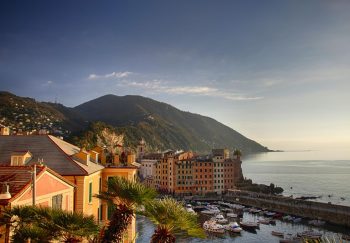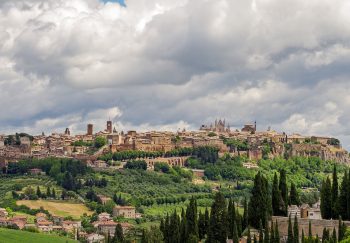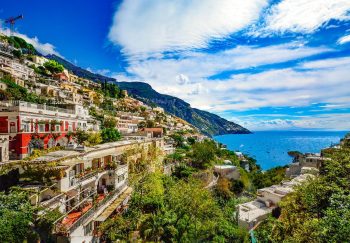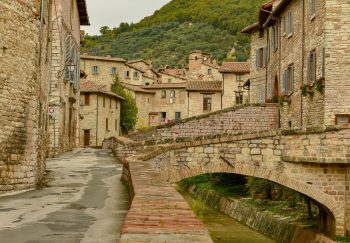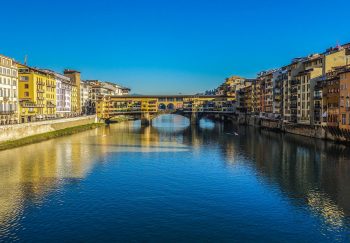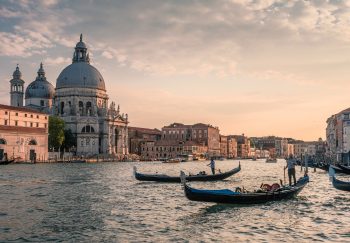Crypts and catacombs, torture rooms, and many more: There’s more to Italy than beautiful art and delicious food.
Here are five of the most terrifying places in Italy. Warning! Don’t continue reading unless you are ready to be truly scared.
The Christian Catacombs of Rome
It was possible for Christians in Italy to bury their dead in pagan cemeteries, or in underground cemeteries located on Christian-owned land. With a little money and the help of the Catholic Church, the Catacombs of St. Callixtus on the Appian Way were created. The catacombs at St. Callixtus are the most important catacomb sites in Rome. The catacombs are named after the deacon Callixtus and house up to 16 popes. – and many other Christians. This tour takes about half an hour and will take you deep beneath the earth. This tour is not recommended for those who are easily claustrophobic. The narrow corridors lead to the tombs of ancient Christians from Rome.
The catacombs at St. Callixtus can be accessed all year, except Wednesdays, Christmas, New Year’s Day, and Easter Sunday. The hours of visit are 9:00 – 12:00 and 2.00 p.m. to 5:00 on Via Appia Antica 110/126
The Capuchincrypt of Rome
The bones of almost 4,000 skeletons decorate this small crypt, which is most likely the work of Capuchin friars. The walls are covered in bones, which were nailed to them in various patterns and designs. While some serve as frames for an altar or light fixtures, others hang from the ceiling and are used as light fixtures. There are several small chapels that make up the crypts. Four of them are named after bones from the human body. The Crypt of the Three Skeletons is a dramatic and creepy representation of life, death, and the Final Judgment of all humans. It is best to read the sign in five languages: “What you used to be, we used now; what you are now, you will be …”.”
The Crypt is located on Via Veneto 27 under Santa Maria della Concezione dei Cappuccini Church. The museum and crypt can be toured for 6 euros, Friday through Wednesday 9 a.m. to 6:30 p.m.
The Capuchin crypt in Palermo (Sicily)
One of the 8,000 corpses found at the Capuchin crypt, Palermo-Here, graces the cover of a book on the crypt
The Capuchin Crypt of Rome is nothing like its Sicilian counterpart. The Capuchin monks of Palermo mummified over 8,000 corpses. They took the corpses to the drain, cleaned them with vinegar and stuffed them with straw. Finally, they dressed the corpses in their clothing and set them up in the catacomb.
What did the result look like? The result? They are in various states of decay. One little girl looks so peaceful that it seems like she’s asleep, even though she was interred in 1920. It is not surprising that one of our co-founders felt so scared when he visited Palermo’s Capuchincrypt.
You think you can do it? This video is almost as jaw-dropping as the real thing.
Via Cappuccini 1 is where you will find the Capuchin crypt. It is open daily from 9am-12pm, and 3pm-5pm.
Narni’s Inquisition torture chambers
Narni, a hilltop medieval town overlooking Umbria’s rolling hills, seems peaceful and beautiful in almost every way. Santa Maria Maggiore is the exception to this rule. Uncovering this 14-century Dominican Church are a series underground rooms… which once served as cells for tortures, trials and imprisonments by the Inquisition.
The cells were used from 1650 to 1860 (! The cells were then forgotten for many years. Roberto Nini, a 20-year old Italian man, discovered the cells accidentally in 1979 when he found a crack in his neighbor’s home. He ended up in a medieval chapel under the present-day church. Next door? The inquisition chambers. Nini set out on a Dan Brown-like expedition to piece it all together. He visited the Vatican’s former Holy Inquisition Office and secret archives of the former Holy Inquisition Office.
Today you can see below the ground the torture chamber with racks and other tools that would have been displayed. The “Room of Torments”, a small cell that is completely covered with symbols, prayers, and codes, is what is most heartbreaking. Many of these were executed in 1759 by Spoleto’s Inquisition guardians, a Freemason accused of releasing a prisoner.
As if that wasn’t scary enough, the church was shattered by an earthquake in December 2005. Beneath it? The skeletons and bones of children, men, and women.
The Narni Underground is open all year on scheduled tours.
Venice’s Poveglia Island
Poveglia is the most bizarre island in Italy…
Many myths surround Poveglia. It is an island that was abandoned in the Venetian lagoon. What we know is that Poveglia was Venice’s quarantine Island in the 15th century. Anybody with symptoms of disease, such as the Black Plague or the terrible Zika virus, had to wait their turn here. It also served as a burial ground for those who were not fortunate enough to be quarantined. On Lazzaretto Nuovo island, mass graves containing thousands of plague victims’ bones have been discovered. They are still not found and marked at Poveglia.
Poveglia is even more creepy than Lazzaretto nuovo because a mental institution was established here in 1922. 100 years ago, psychiatric medicine was not very forgiving. The island’s barred windows still show that people held there felt as if they were being held prisoner as patients. The island and all its buildings have been abandoned today. It is not recommended that tourists ever set foot on the island.
This is enough to make us cringe. The legends go even further: One of the doctors at the mental hospital tortured patients in the single belltower, and was then strangled to death with a “ghostly fog.”
Poveglia Island technically is off-limits unless you are a daring water taxi driver. However, you can visit Lazzaretto Nuovo which is another main quarantine island that has been open to the public. Guided tours are offered on Saturdays and Sundays from April through October at 9:45am, and 4:30pm.
Fontanelle Cemetery in Naples
In 16th century Naples began running out of space to bury its dead. Undertakers began moving bones into a cave outside the city walls. After the plague of 1656, which decimated Naples, the cemetery saw a major boost. The cave was home to thousands of bodies. It became a graveyard for the poor, housing a large number of bodies that were deposited in it during the 1837 cholera epidemic. The cave is home to the remains of 40,000 people, though thousands more may be hidden beneath the surface.
Father Gaetano Barbati decided that it was time for the cave to be cleaned up in 1872. His followers organized and cataloged the bones. Here’s the scary part: They also inspired devotion to the dead. Volunteers didn’t just clean skulls. They were also praying to them, asking for their favors. The Archbishop of Naples closed down the cemetery in 1969 because he was concerned that it would become a fetishist religion. The cave was only reopened to the public in 2010… it still contains the skulls and bones of 40,000 people.
The Cimitero delle Fontanelle can be found open every day from 10am to 5pm, except Wednesdays. It is located at Via Fontanelle 8.
Naples’ San Gaudioso Catacombs
The San Gaudioso Catacombs are located near the Fontanelle Cemetery. The catacombs date back to the ancient Romans, but they didn’t become really scary until the 17th century when they were taken over and renamed by macabre monks. The corpses were placed in a niche made with holes and allowed to drain their body fluids. After a corpse has been decomposed, it was removed and the skull, along with other bones like vertebrae, would be attached to a wall to create a fresco. You can still see the frescoes and skulls. This is one of Naples’ most under-visited catacombs. It’s a great place to walk alone through the darkened, bone-decorated gloom.
Piazza Sanita 14 is where you will find the . Guided tours are offered every hour from 10am to noon, every day. To request an English guide, call ahead




